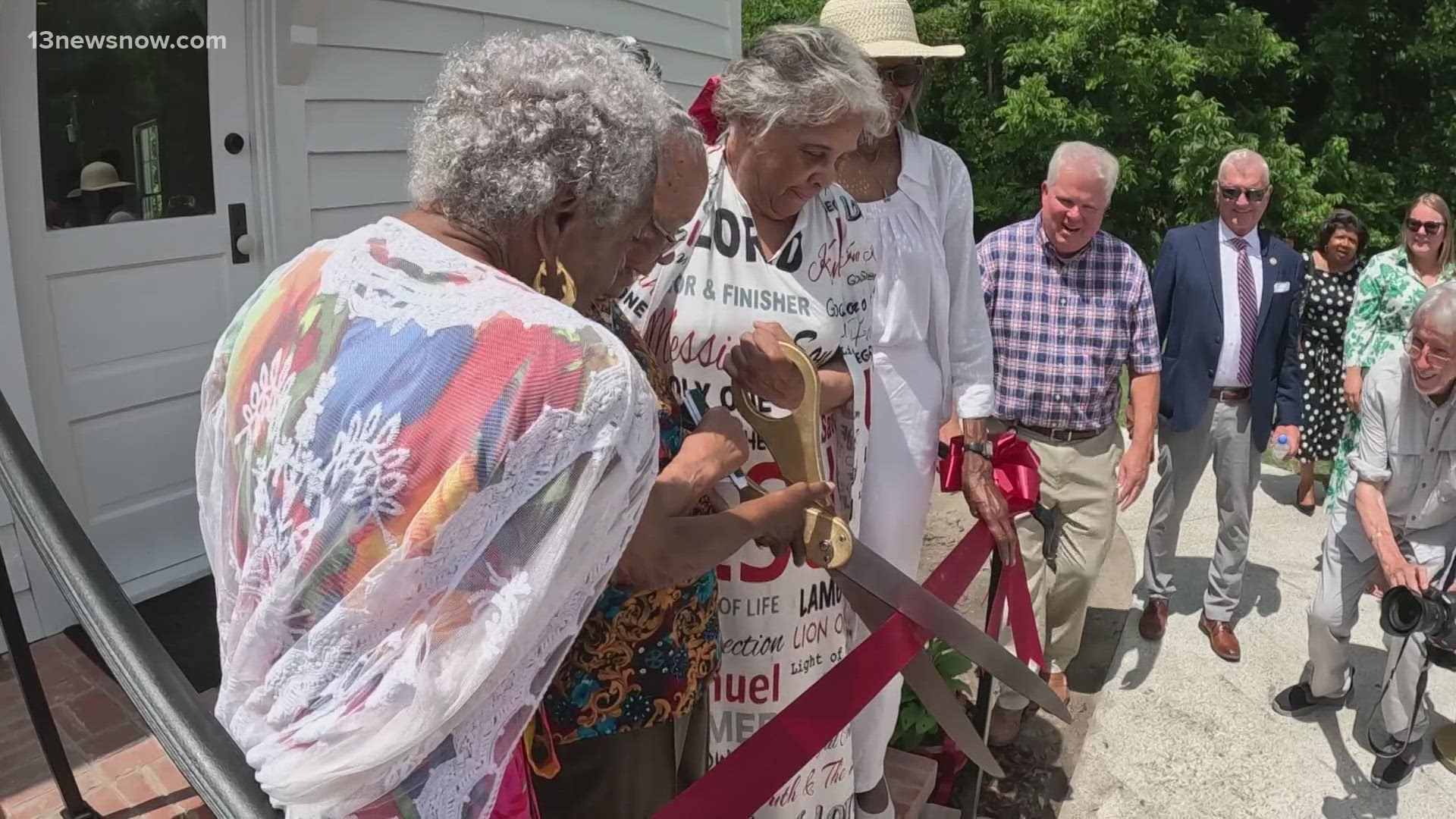CHESAPEAKE, Va. — The four walls of the historic Cornland School building have long stood as a symbol of division.
Built in 1902, the original one-room schoolhouse dates back as early as the 1870s as the "Benefit Colored School", and became a safe haven for African American students to receive an education through segregation.
For decades, the schoolhouse had fallen into disrepair while it sat on private land near the Great Dismal Swamp.
Recent renovation efforts to rehabilitate the structure-- and turn it into a working museum-- officially finished Saturday, reopening the historic school house to the public.
This February, the still-living alumni of the school told 13News Now they were concerned that they would not still be living by the time the construction for their former place of education finished.
But Saturday, a handful of the surviving alumni were able to go back to class, cutting the ribbon and seeing the end of a years-long journey.
“I didn’t think I would live to see them finish it. I told them they had to, I didn’t think I would live to see it finished, and they did it. I'm thankful," alumna Mildred Brown said.
Brown, who will turn 95 years old this month, can still remember the acts of racism and prejudice Cornland students experienced while trying to receive an education. Many of the students walked miles each way to receive an education.
"I can remember walking to school, white kids riding the bus would throw whatever they had out at us. But out here, you knew nothing else to do but look at what the teacher said," alumna Pauline Smith said, who is 89 years old.
The Cornland School is part of a larger historical village project honoring the history near the Great Dismal Swamp.
The project's costs-- split between federal and state funding-- cost more than $1.8 million.

